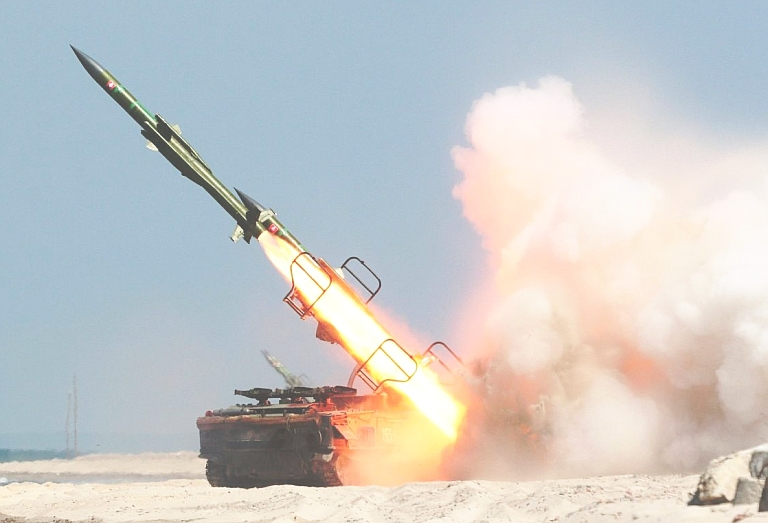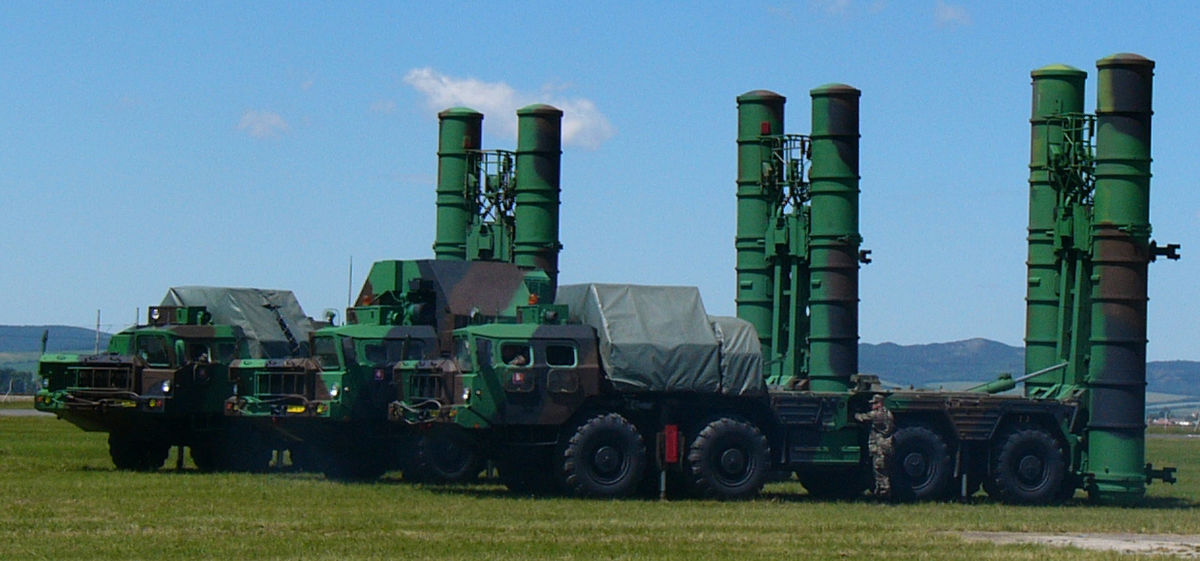The Russia-Ukraine war has revolutionized modern warfare, with tactical reconnaissance drones emerging as a game-changer. These unmanned aerial vehicles provide unprecedented battlefield awareness, rendering traditional troop concealment nearly impossible and shifting the conflict toward positional warfare.
The Ukrainian project Deep State addresses a crucial question: How to effectively counter these aerial threats? Their analysis reveals a promising solution – using drones to fight drones, specifically employing inexpensive FPV (First Person View) unmanned vehicles.
This strategy has already seen success in the field. In June, Ukrainian border guards downed a Russian ZALA reconnaissance drone in Odesa Oblast, while the 93rd Mechanized Brigade’s SIGNUM unit intercepted a fast-moving Lancet loitering munition.
On 10 June, the Ukrainian border guards in Odesa Oblast managed to spot and destroy in the air a Russian unmanned aerial vehicle (UAV) Zala, that was trying to carry out a reconnaissance operation in southern Ukraine.
Ukrainian forces used an FPV drone to eliminate it in the… pic.twitter.com/kSRKVeraGb
— Euromaidan Press (@EuromaidanPress) June 12, 2024
Initially a grassroots tactic developed by individual units, drone-on-drone warfare is now poised for widespread adoption in air defense operations. This shift represents a significant leap in counter-drone strategies, offering a cost-effective and adaptable solution to modern aerial threats.
The four tiers of military drones: from mini to mammoth
Drones in modern warfare fall into four categories:
- HALE (High Altitude Long Endurance): Examples include the Global Hawk and China’s WZ-8, operating at altitudes of 18-20 km (60,000-70,000 feet) for extended periods, often 24+ hours.
- MALE (Medium Altitude Long Endurance): Like the MQ-9 Reaper, Orion and the Bayraktar TB2, operating at 4-9 km (15,000-30,000 feet) for 20+ hours.
- Tactical UAVs: Including Ukraine’s Leleka-100 and Russia’s Orlan-10. These operate at lower altitudes, typically under 4,6 km (15,000 feet), for shorter durations (5-10 hours), and are used for battlefield reconnaissance and targeting.
- Mini/Microdrones: Commercially available FPV quadcopters repurposed for combat. These operate at very low altitudes, often below 120 meters (400 feet), for short durations but offer unprecedented tactical flexibility.

While Ukraine can counter large Russian drones with traditional air defense, and cheap mini-drones fall prey to widespread electronic warfare (EW), tactical UAVs present the greatest challenge.
These mid-sized drones are cheaper than their larger counterparts, with wingspans of a few meters and masses of tens of kilograms, and cost around $100,000. However, they can be equipped with powerful communication and navigation systems, ensuring high interference resistance. The Russian Orlan-10’s Kometa-M satellite navigation CRPA antenna exemplifies this resilience. Only rare, powerful systems like Ukraine’s Bukovel AD offer effective countermeasures.
This new reality has forced a three-tiered defense:
- National air forces versus large drones
- “Trench” EW against mini drones
- Army units tackling tactical UAVs.
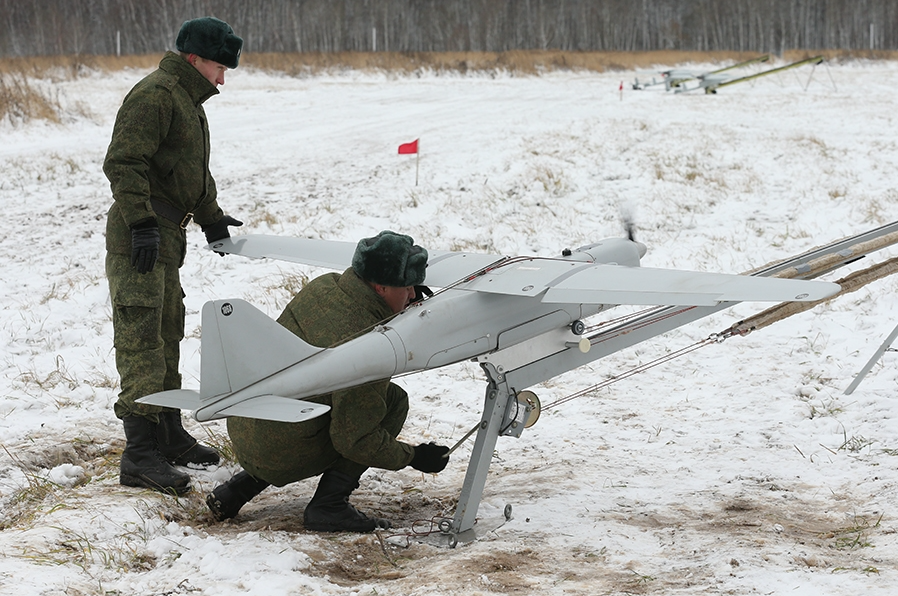
Yet ground-based air defense (army units) faces a perfect storm:
- Too many targets, too few interceptors
- Systems designed for aircraft, not agile drones
- Vulnerability to precision strikes, as seen with Russia’s Lancet kamikaze drones and Iskander missiles.
Missiles, guns, and innovation
The backbone of ground-based air defense has long been missile systems, engaging diverse aerial threats with radio-guided or infrared-homing missiles. While radio guidance is cheaper, infrared systems offer better precision but at a higher cost and with vulnerabilities to decoys.

Cost-effectiveness drives innovation. The APKWS exemplifies this innovation. This $40,000 laser-guided upgrade to the Hydra 70 rocket offers precision at a fraction of traditional missile costs. It’s a key component of the Vehicle-Agnostic Modular Palletized ISR Rocket Equipment (VAMPIRE) system, proving effective against Russian Shahed-136 drones in Ukraine.
Interestingly, the drone era has revitalized anti-aircraft guns.
- Ukraine employs Soviet-era guns like the ZU-23-2, KS-19, and S-60. While the KS-19 and S-60 are often repurposed for ground targets, the ZU-23-2 excels against large, slow, low-altitude drones like the Shahed.
- The German Gepard self-propelled anti-aircraft gun, developed in the 1960s, is reliable but vulnerable to Russian weapons and has a limited 4 km range, making it less effective near the front lines.

- Cutting-edge systems like the German Skynex push boundaries further. At €180 million for two units, it uses programmable ammunition, destroying drones for about €4,000 each. Yet, it shares the Gepard’s 4 km range limitation. This makes it challenging to provide comprehensive drone protection for troops.
This mix of old and new, missiles and guns, underscores a key point: effective air defense in the drone age requires a layered, diverse approach. While no single system is a panacea, the combination of various technologies offers a robust defense against the evolving aerial threat landscape.
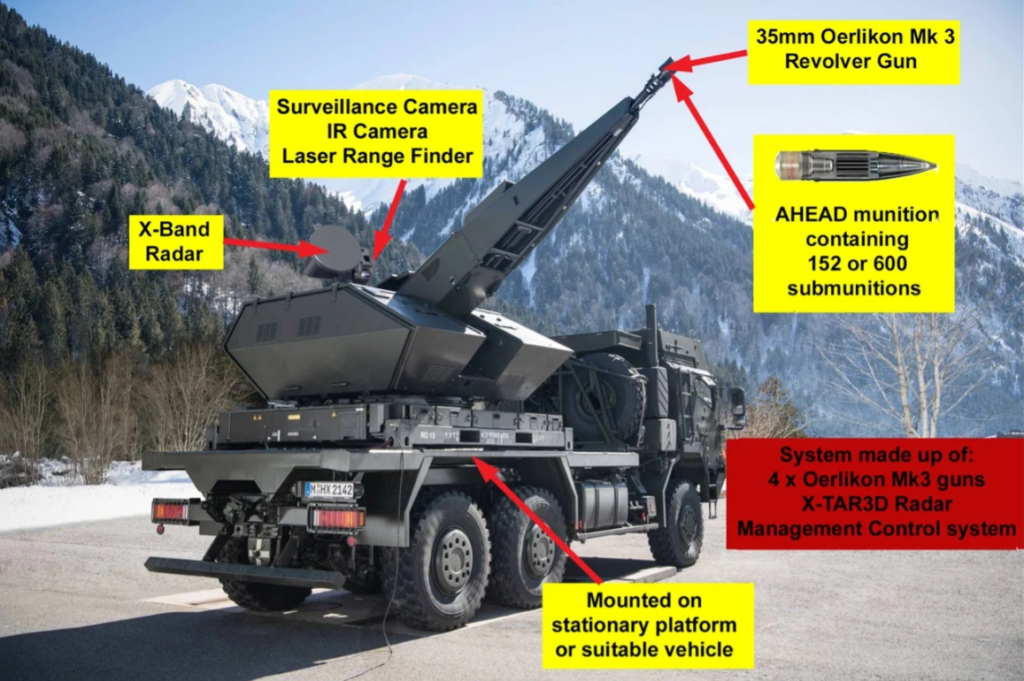
The rise of FPV drone interceptors
In a classic case of fighting fire with fire, the threat of tactical reconnaissance drones is being met with an unexpected counter: modified FPV drones.
These agile interceptors, capable of speeds up to 150 km/h (93 mph), are transforming from hobby toys to aerial hunters. Equipped with cameras, communication systems, and explosive payloads, they’re designed for a singular purpose: to collide with and destroy larger, more expensive enemy drones.
The key challenges lie in target acquisition and payload detonation. Rapid advancements in machine vision are addressing the former, while LIDAR-based automatic triggers solve the latter. These enhancements, while increasing costs, keep FPV interceptors economically viable compared to traditional anti-aircraft missiles.
Underpinning this drone-on-drone combat are sophisticated radar systems:
- Advanced long-range radars track multiple targets beyond 50km (31 miles), providing comprehensive aerial situational awareness.
- Mobile, frontline-friendly systems with 30-50 km (19-31 mile) ranges offer flexibility in dynamic combat zones.
Both types deliver near-real-time detection with sub-second delays, crucial for countering agile drone threats.
For Ukraine’s specific needs, simpler yet effective radar stations with detection ranges of 30-50 km are proving invaluable. These systems, whether of Ukrainian or Western origin, are actively deployed along the front lines. Their ability to detect Russian drones in real-time with minimal delay makes them a critical asset in Ukraine’s air defense strategy.
Inside Ukraine’s FPV drone defense system
The smallest unit in the interception system is a platoon, comprising 3-4 groups of FPV operators and radar technicians. Each group is equipped with a vehicle, essential gear (antennas, batteries, tablets, radios), and a set number of FPV interceptors. For safety, operator units are positioned several kilometers from the radar.
Ukraine’s drone defense system blends simplicity with cutting-edge technology. Here’s how it works:
- Advanced radar stations detect incoming threats, instantly relaying data to command units.
- Operators launch FPV interceptor drones, guided by real-time coordinates.
- As interceptors approach, operators take over for visual acquisition.
- In the final stage, automated systems manage approach and detonation.
- Human oversight remains crucial for last-minute adjustments and problem-solving.
Key technological advancements like reliable drones, remote detonators, and machine vision have simplified this process. While skilled operators are still essential, these innovations reduce the need for expert-level piloting, making the system more accessible and scalable.
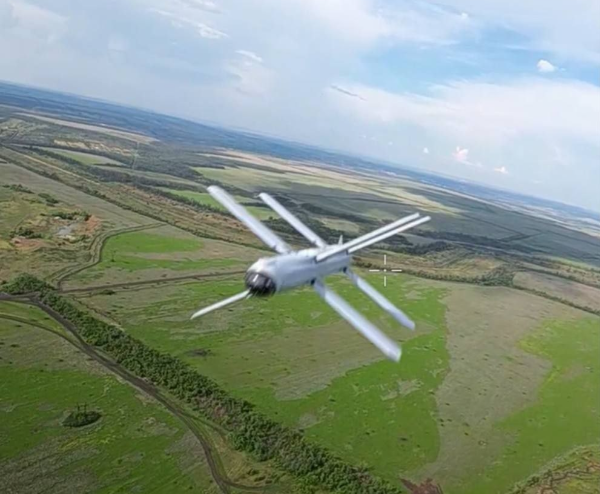
This system, while effective, faces challenges. Enemy electronic warfare, battery limitations, and weather conditions pose significant threats. Additionally, the radar stations crucial to this network are vulnerable to Russian anti-radiation missiles and electronic reconnaissance. Despite these hurdles, the system’s cost-effectiveness (modified FPV drones cost only $1000 each) and adaptability make it a compelling alternative to traditional anti-aircraft systems.
A complex capable of covering 40+ kilometers of frontline typically includes:
- Three platoons with 2-3 radar stations
- A unified command post
- Signal repeaters
- Several mobile firing groups for additional coverage and interaction.
The price tag of the equipment is around $1 million. The density of the defensive “dome” increases with more FPV units.
To cover Ukraine’s 1,200 km frontline, ideally 60 such complexes are needed, though 25 would meet urgent requirements.
****
In the evolving landscape of modern warfare, FPV interceptors are emerging as a game-changing solution against enemy tactical UAVs. This innovative approach offers a cost-effective and adaptable alternative to traditional anti-aircraft systems.
The appeal lies in its simplicity and efficiency. An interceptor drone costs a fraction of conventional surface-to-air missiles, yet when integrated into a comprehensive system, these agile defenders prove remarkably effective. Their rapid development and deployment cycle allows for quick adaptation to emerging threats.
Currently in its early stages, this strategy’s success hinges on advanced electronic intelligence, seamless communication systems, and well-trained operators. While not a universal solution, FPV interceptors represent a significant leap in air defense strategy.
Read more:
- How FPV drone tactics change trench warfare
- FPV drones responsible for destroying more than two-thirds of Russian tanks in recent months – Foreign Policy
- Ukraine’s secret FPV drone labs race to stay ahead of Russia





